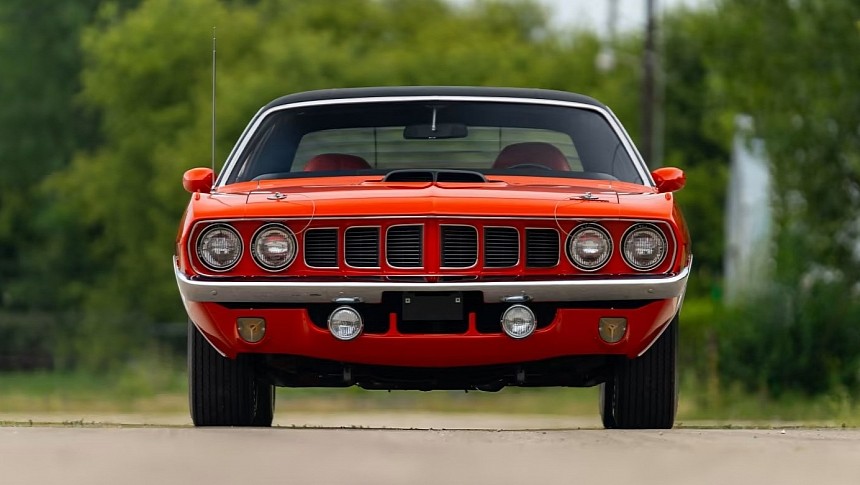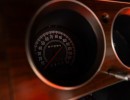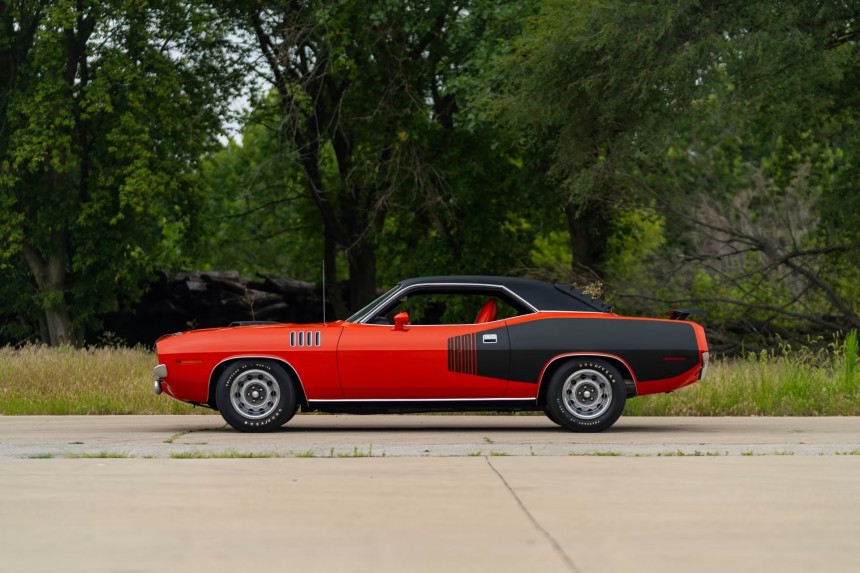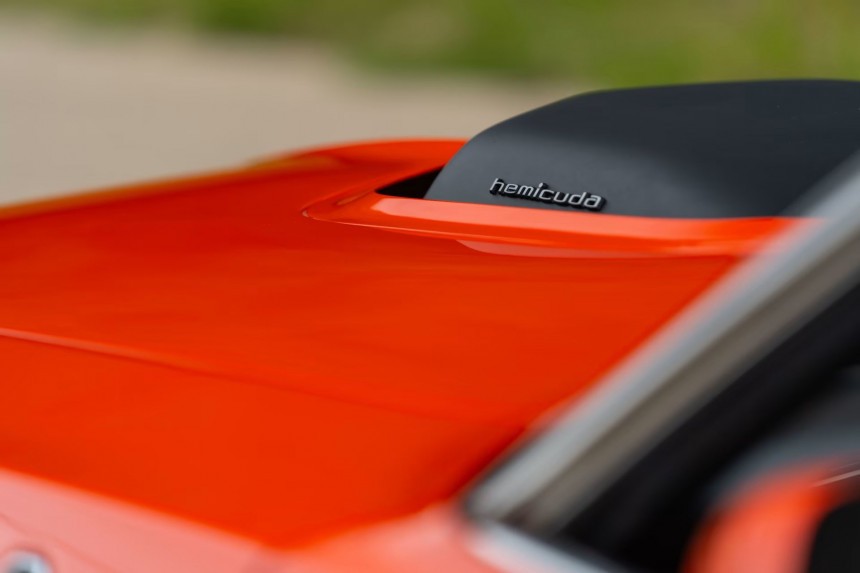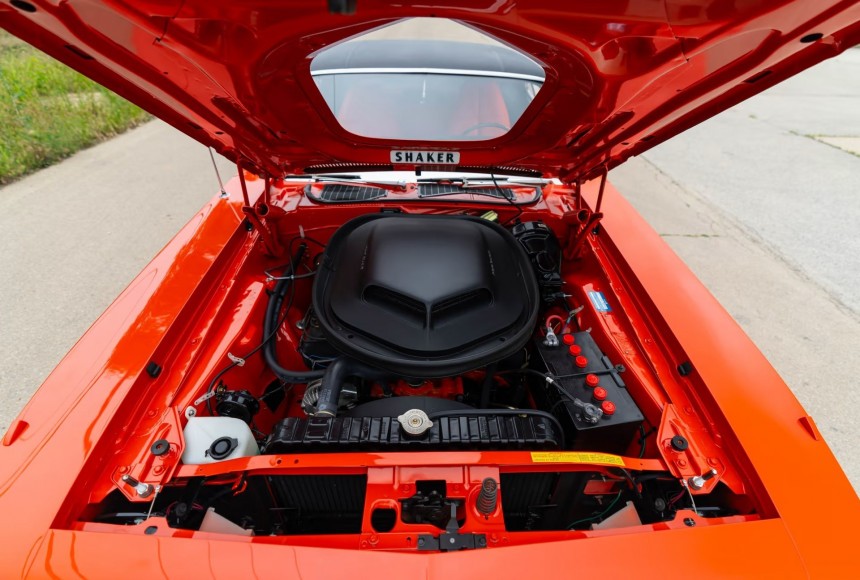There is something special about 1971 – if we put on the Plymouth goggles and look at that year from that perspective. Although it went utterly unnoticed then, the event fully aligned with the chaos theory mathematical model that states that a butterfly flaps its wings in Hong Kong and triggers a hurricane in Los Angeles. Similarly, the 1971 Plymouth HEMI ‘Cuda warped time, space, and imagination and reached staggeringly astronomical prices half a century after it came on the market.
The 1971 model of the third-generation Barracuda is the most recognizable, no matter how we look at it. Literally, the front, back, and sides wear telltale signs that immediately identify the car as a ’71. Dual headlights, quadruple fender gills, two-cluster rectangular-ish taillights, and the signature cheese grater grille are all unique to the 1971 model.
Also, that year marked another important – but equally sad – moment in Mopar history: the illustrious hemispherical-headed engine, the fabled 426-cube (7.0 liters) V8, was put away at the end of the 1971 production. Three more years down the line, the Barracuda took the big step into legendhood. On April 1, 1974, the nameplate ceased its metamorphosis into metal – 3,652 days after its first fire-up. That’s precisely ten years to the day – a relatively short production run that came – and went – like a comet.
Nowadays, the last-year HEMI ‘Cuda is arguably the most coveted muscle car from the Golden Age – if we take the auction sales prices as the pillar of this argumentation. It carries a massive premium for a car that’s not in any way, shape, or form separate from its combustion siblings by lightyears' worth of distinction. And the rarity isn’t the decisive factor here – far more exclusive automobiles don’t convey the fuzz and buzz of a ‘hemicuda.’
Granted, the HEMI – because that’s the million-dollar answer (in the most literal sense possible) to this dilemma – is not exactly widespread. Notably, the 1971 production run of the notorious 426-equipped Plymouth Barracudas stops at 114 units. 107 had a metal sheet above the cockpit, and seven had the weather-adjustable option of a ragtop.
In its last year, the HEMI ‘Cuda stipulated, as a last will and testament, that 48 hardtops would receive the three-speed TorqueFlite automatic transmission. While not as unicornian as the convertible ‘71s, the last iteration of the HEMI-firing E-body Plymouth with a proper roof is still a magnet for collectors.
However, with so few to begin with, sales of such examples are relatively not commonplace and tend to draw attention. And, crucially, high and very high premiums, depending on the car’s condition, history, and a collection of similar whatnot thrifts. Naturally, the unrestored, all-original, low-mileage examples fetch the lion’s share, but other examples are in for the money, even with minor alterations that chip their “factory-built” authenticity.
One member of the second group will go under the hammer at next year's debut in Kissimmee, Florida. By then, the car will have been in its current owner’s custody for 12 months short of three full decades. Jeff Sparks acquired this car in 1995 – even though he had it in his sights since 1994. The asking price then (just like now) was a deal-breaker, and the man might have never purchased the long-awaited car.
But in 1995, the muscle car market faced a ‘bear’ moment, and the 1971 HEMI ‘Cuda pictured in the gallery got a 10-grand discount. Some opportunities are once-in-a-lifetime car epiphanies, and Jeff opened his wallet. At the time, the car was already out of the ‘survivor, unrestored, unmodified original’ society of HEMI ‘Cudas, with the genuine factory-installed V8 rebuilt and over-bored 0.030” (0.762 mm). The motor also featured a new camshaft, “one step above stock,” as the then-seller put it. However, the engine, transmission, and rear end were original and numbers-matching to the car.
In 2004, the car was awarded a “Best E-Body Plymouth Original” at the Mopar Nationals in Columbus, Ohio. The vehicle has a history dating back to day one – with some handwritten notes from its second owner – Jeff Sparks, the man who bought it in ’95, is its fifth.
When he got his dream car, the ‘Cuda was around 47,000 miles young (75,623 kilometers), and the odometer hasn’t had much to record since then. The clock now reads 47,681 (76,719 km) – which begs whether this gem has been driven at all by its current owner or if the mileage specified for 1995 was just a rounded approximation.
Whichever the case, one thing about this Tor-Red example strikes above all else – the car’s orange and black interior with vinyl buckets (these came as standard on the 1971 ‘Cudas). Allegedly, only one other HEMI example with this interior trim option exists. Also, another quirky detail about this odd-ball ‘Cuda is that its slap-stick shifter is a day-two installment. Initially, this car had a column-mounted shifter. However, this information was conveyed on a Mopar online community, so it should be double-checked before the auction that debuts on Jnuary 2 next year.
Also, that year marked another important – but equally sad – moment in Mopar history: the illustrious hemispherical-headed engine, the fabled 426-cube (7.0 liters) V8, was put away at the end of the 1971 production. Three more years down the line, the Barracuda took the big step into legendhood. On April 1, 1974, the nameplate ceased its metamorphosis into metal – 3,652 days after its first fire-up. That’s precisely ten years to the day – a relatively short production run that came – and went – like a comet.
Nowadays, the last-year HEMI ‘Cuda is arguably the most coveted muscle car from the Golden Age – if we take the auction sales prices as the pillar of this argumentation. It carries a massive premium for a car that’s not in any way, shape, or form separate from its combustion siblings by lightyears' worth of distinction. And the rarity isn’t the decisive factor here – far more exclusive automobiles don’t convey the fuzz and buzz of a ‘hemicuda.’
In its last year, the HEMI ‘Cuda stipulated, as a last will and testament, that 48 hardtops would receive the three-speed TorqueFlite automatic transmission. While not as unicornian as the convertible ‘71s, the last iteration of the HEMI-firing E-body Plymouth with a proper roof is still a magnet for collectors.
However, with so few to begin with, sales of such examples are relatively not commonplace and tend to draw attention. And, crucially, high and very high premiums, depending on the car’s condition, history, and a collection of similar whatnot thrifts. Naturally, the unrestored, all-original, low-mileage examples fetch the lion’s share, but other examples are in for the money, even with minor alterations that chip their “factory-built” authenticity.
But in 1995, the muscle car market faced a ‘bear’ moment, and the 1971 HEMI ‘Cuda pictured in the gallery got a 10-grand discount. Some opportunities are once-in-a-lifetime car epiphanies, and Jeff opened his wallet. At the time, the car was already out of the ‘survivor, unrestored, unmodified original’ society of HEMI ‘Cudas, with the genuine factory-installed V8 rebuilt and over-bored 0.030” (0.762 mm). The motor also featured a new camshaft, “one step above stock,” as the then-seller put it. However, the engine, transmission, and rear end were original and numbers-matching to the car.
In 2004, the car was awarded a “Best E-Body Plymouth Original” at the Mopar Nationals in Columbus, Ohio. The vehicle has a history dating back to day one – with some handwritten notes from its second owner – Jeff Sparks, the man who bought it in ’95, is its fifth.
Whichever the case, one thing about this Tor-Red example strikes above all else – the car’s orange and black interior with vinyl buckets (these came as standard on the 1971 ‘Cudas). Allegedly, only one other HEMI example with this interior trim option exists. Also, another quirky detail about this odd-ball ‘Cuda is that its slap-stick shifter is a day-two installment. Initially, this car had a column-mounted shifter. However, this information was conveyed on a Mopar online community, so it should be double-checked before the auction that debuts on Jnuary 2 next year.
